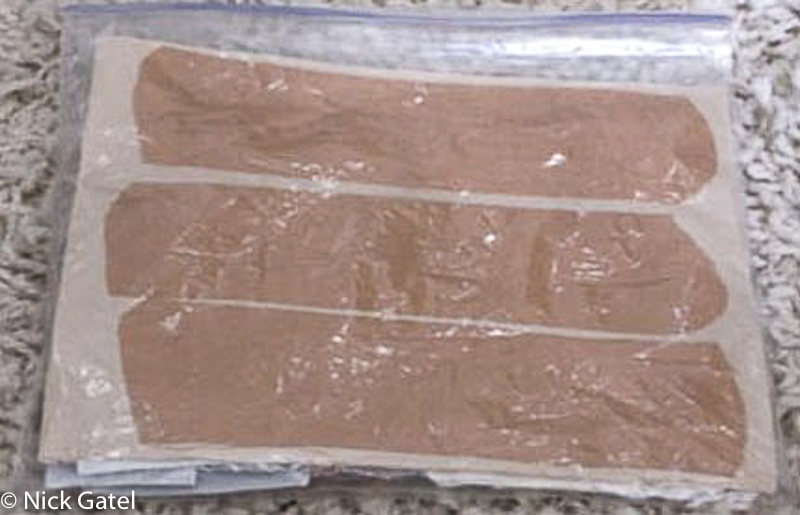A common ailment for hikers are foot blisters, and I would imagine more backpacking trips are cut short due to blisters than any other cause.
Typically I want to use a product for at least 10 years before recommending it. Leukotape not only meets this standard but it is an amazing product – the best I have ever used for preventing and treating blisters.
What causes foot blisters?
Most of the time, for hikers, it is simply friction. Ill-fitting shoes, a bunched up section of a sock, as seam or protrusion in the shoe or boot itself are all typical sources for blisters.
Solutions I have used over the years
Sock Liners
Probably the most important thing I have done is to “break in” my hiking shoes/boots. Before I switched to trail running shoes over a decade ago, I wore leather boots, which really need a breaking in period. But even that didn’t always work. The best solution I found was to wear an ultrathin sock liner made with silk under my wool socks. The smooth, almost slippery, surface really reduced the potential for friction between the foot and shoe or boot.
Making Feet Tougher
This is simple, but in our modern shoe-clad world not practical for many people – just go barefooted as much as possible every day. Soft feet are more prone to blisters.
Preventative Maintenance
I don’t do this as much as I should. As soon as you feel a “hot spot” on your foot, stop and take care of it. Sometimes these hot spots are caused by a small pebble, a bit of sand, a bunched sock, seam in the shoe, or a misalignment of the insole.
Oftentimes that hot spot needs to be covered to isolate it from the sock/shoe. Typical solutions used are a Band-Aid, a piece of first aid tape, or even a piece of duct tape. Years ago I would use a piece of Moleskin, a foam backed tape.
First Aid
What is Leukotape?
It is not marketed as a solution for blister prevention or first aid. It is a physiotherapy tape designed to provide support for sprains and strains – think of the athlete that tapes his or her ankle – that is the intended use. You want to use the Leukotape “P” as it doesn’t stretch like some of the other kinds of Leukotape.
This website may be compensated for linking to other sites for sales of products. As an Amazon Associate I earn a small fee from qualifying purchases at no additional cost to the purchaser.
But it is porous and breathable (the disadvantage with solutions like duct tape), it stays put even when wet and it tears easy for application on the skin. Additionally, it can easily and painlessly be removed. It is perfect to the treatment and prevention of blisters.
Leukotape isn’t stocked at places like Walgreens, CVS, or Walmart. Usually it has to be ordered online and it is reasonably priced on Amazon. If you are an Amazon Prime Member, you can get it in two days with free shipping for well under $10.
The smallest size is 1.5 inches by 15 yards, which is way too large to carry in your backpack. What I used to do is cut a few small strips and apply them to the back of slick paper, such as used for mailing labels.

Unfortunately, after a period of time the adhesive dried out making the tape useless. Surprisingly the large roll was stored in my garage with my backpacking gear for over ten years and the adhesive was fine even though temps in the summer can exceed 120F and get down to freezing in winter. Nowadays I just cut off about 12 inches from the large roll, and then roll it up into a smaller roll. The adhesive lasts, although I replace it with a new one about once a year.
Case Study
A couple months ago I was doing a lot of day hikes in the local mountains of 5 to 11 miles, getting ready for a trip. I was wearing a new pair of Salomon XA Pro 3D shoes, having worn out another pair. The very first day I developed a painful hot spot under a sewn seam. In preventative maintenance mode, I covered it with a piece of Leukotape. At the time we were tiling the wall and floor of our guest bathroom (I just wear flip flops when doing construction work around the house). Left the tape on for nearly a week – hiking each day, tiling each day, and showering each day. The tape stayed secure. When I decided to remove it, it peeled off easily.

